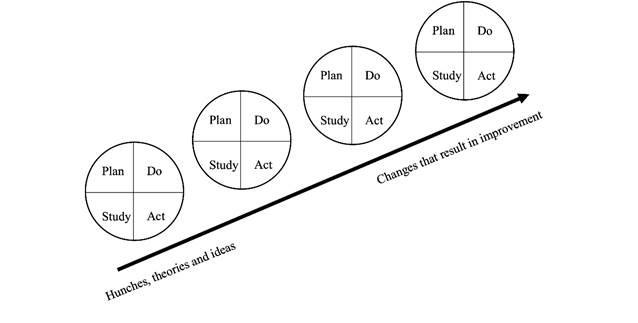
4 minute read
› New Waitaha | Canterbury Suicide Prevention Action Plan and website launched › Hand hygiene for patients – making it easy... pg 17-18
New Waitaha | Canterbury Suicide Prevention Action Plan and website launched
The new inter-agency Canterbury Suicide Prevention Strategic Action Plan, 2022 - 2025 and accompanying Suicide Prevention Canterbury Waitaha website were launched this month.
Advertisement
Te Oranga Tonutanga Waitaha, Living Well Waitaha, Canterbury Suicide Prevention Action Plan and the website were unveiled at a function at Tūranga on 6 July. There was a small inter-agency presence due to the COVID-19 outbreak, including Interim Regional Director Te Wai Pounamu, Interim District Director Waitaha Canterbury and Te Tai o Poutini West Coast Peter Bramley. In late 2018, Canterbury DHB instigated a cross-sectoral Canterbury Suicide Prevention Governance Committee (CSPGC). The CSPGC met to provide direction, education and support for suicide prevention activities in Canterbury. They began work on creating a cross-sectoral Suicide Prevention Action Plan for Canterbury with an accompanying website that provided information on where to reach out for assistance to strengthen communities and access skills training in suicide prevention. In late November 2019, a Canterbury Suicide Prevention Forum was held with Canterbury stakeholders to consult on actions required to provide an inaugural cross-agency action plan. A further follow-up forum occurred in 2020. Progress was delayed due to the pandemic however both the action plan and website were completed this year. The keynote speaker at the recent launch was Victoria University of Wellington lecturer and prominent suicide prevention researcher, Chris Bowden. He applauded the cross-sectoral plan as an evidence-based approach to suicide prevention that set an example for the rest of Aotearoa, New Zealand. The new Action Plan was printed by the Christchurch City Council and the website was completed and will be maintained by Pegasus Health Ltd, where our Canterbury Suicide Prevention Coordinator Team is based.
You can find “Te Oranga Tonutanga Waitaha, Living Well Waitaha, a Canterbury Suicide Prevention Action Plan 2022” and the Suicide Prevention Canterbury Waitaha website on suicidepreventioncanterbury.org.nz/.
Te Oranga tonutanga o Waitaha Living Well Waitaha
Canterbury Suicide Prevention Strategic Action Plan 2021 – 2024
Mahere rautaki aukati whakamomori ki Waitaha 2021 – 2024

Hand hygiene for patients – making it easy
It is important that inpatients who are unable to walk on their own to a hand basin, are still able to clean their hands and maintain good hand hygiene. In the recent Inpatient Experience Survey, we asked: ‘If unable to walk unattended to the hand basin when you needed to clean your hands, were you provided with a suitable alternative?’ After receiving a low rating for this question (70.6 percent for April 2020) and with COVID-19 and influenza cases continuing to rise, the Hand Hygiene Steering Group began an improvement project. Plan-Do-Study-Act for testing change ideas and improvements The Plan-Do-Study-Act (PDSA) cycle is essentially shorthand for testing a change — by planning it, trying it, observing the results, and acting on what is learned. This is the scientific method, used for action-oriented learning.

Seven PDSA cycles were undertaken at Ashburton and Burwood Hospitals and included such hand hygiene methods as providing a flannel, moist hand towel, wet wipes, different sized hand gel products and holders. All these options were provided for patients within reach from their bed space. The research needed to include a high number of less mobile patients who were dependant on others to access the hand basin for hand hygiene. For Burwood this was the stroke ward (DG) and the orthopaedic rehabilitation ward (D1) and at Ashburton, Wards 1 (General Inpatient) and 2 (AT&R) were chosen for this trial.
The initial trials were comparative, with either an individual 100ml bottle of hand gel or a pack of personal care wipes. Both items received poor feedback. The barriers were the level of manual dexterity required to either flip the lid or open the flap on the pack of wipes. The consumers’ preference was to use a larger pump bottle of hand sanitiser, but this needed a holder.
A bespoke holder placed alongside the bed space, and/or methods of attaching the hand gel brackets to the tray tables or bedside cabinet were considered but raised concerns around:
› the patient being able to reach the holder › the potential risk of skin tears, particularly with very fragile skin Fortunately, the hand gel product supplier (Schulke) came up with a basic table-top stand design able to hold a 500ml bottle of hand gel, which can be placed on the patient’s tray table or moved to the bedside cabinet when the patient is in bed, or as needed. This very simple device has been revolutionary in improving our patients’ ability to manage their own hand hygiene. Due to its design, even when using only one hand, it is difficult to topple and provides ease of access. Three small silicone pads available for placement on the base stop it from slipping. The trial feedback from patients and staff has been very positive. Patient experience feedback results are encouraging with a slight (3 percent) increase in patients responding ‘yes’ to the original survey question – (‘If unable to walk unattended to the hand basin when you needed to clean your hands, were you provided with a suitable alternative?’)



